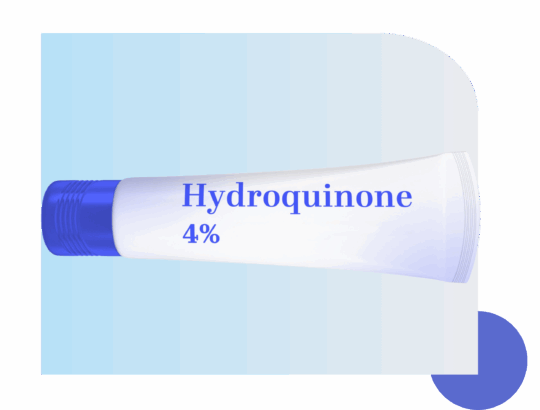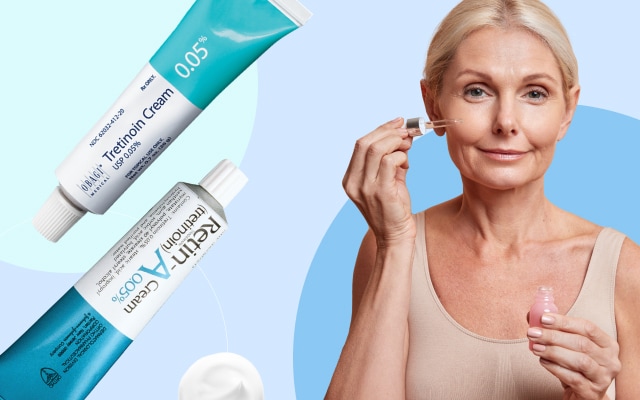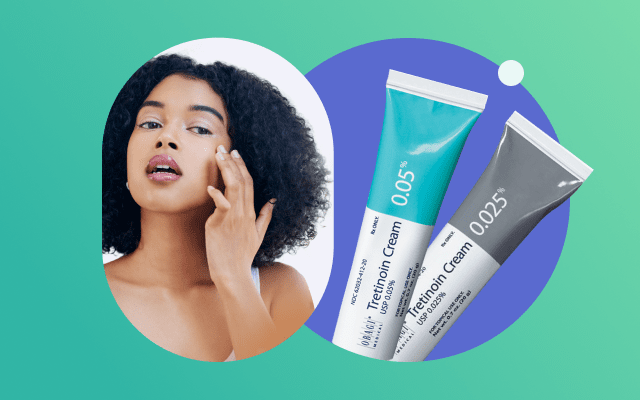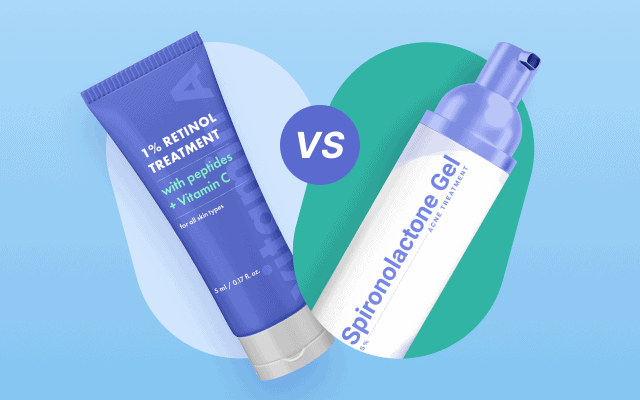What is the best cream for melasma? We asked a derm
What are the best creams and serums for melasma? Dr. Fernandez talks about the most popular ingredients used to treat this type of hyperpigmentation caused by sun exposure and hormonal changes and how to get a prescription.
Table of Content:
Best melasma treatment cream | How to get a prescription? | Best cream for melasma | Prevention
Our commitment to producing high-quality content:
The information presented in this article is based on scientific research and the professional advice of our Content Medical Reviewers, who are experts in the field of Dermatology. How we write our content →
What is the best melasma treatment cream for the face?
According to Dr. Fernandez, prescription-strength melasma creams are generally more effective and deliver faster results compared to over-the-counter options. These formulations contain higher concentrations of active ingredients that target pigment production and accelerate skin cell turnover.
One of the most effective treatments is the triple combination cream, sold under the brand name Tri-Luma, which includes hydroquinone (a skin-lightening agent), tretinoin (a retinoid that promotes cell turnover), and a topical corticosteroid (to reduce inflammation and irritation). This combination is widely regarded as the gold standard for melasma treatment and is often prescribed by dermatologists.
Hydroquinone cream for melasma
Hydroquinone is a skin-brightening prescription medication frequently used to address age spots, freckles, melasma, and dark spots that may have come as a result from sun exposure, inflammation, or skin damage caused by acne vulgaris.
Tretinoin
Tretinoin can help address problems related to excessive skin pigmentation, such as melasma and post-inflammatory hyperpigmentation. It aids in the reduction of dark spots and the attainment of a more uniform skin tone. Tretinoin can also help reduce the appearance of acne scars.
Azelaic acid
Azelaic acid is a topical medication with antibacterial, anti-inflammatory, keratolytic (exfoliating) properties and a whitening effect, which is beneficial for patients with acne or dark spots.
Higher concentrations of azelaic acid such as 15% and 20% require a doctor’s prescription, but topical creams with low concentrations (10%) can be bought over-the-counter.
Glycolic acid
Glycolic acid is used for melasma due to its exfoliating properties, which help remove dead skin cells and gradually lighten dark patches. It also stimulates collagen production, improving skin texture and overall appearance. Glycolic acid can enhance the effect
How to get an online prescription via Miiskin?
Miiskin connects you with board-certified dermatologists, who may prescribe FDA-approved generics or personalized compounded medications.
If you are interested in a customized formula, simply select Foothills as your pharmacy and place your medication order directly in the Miiskin platform. Foothills will send you a payment link, and once payment is completed, your medication will be shipped free via UPS 2-day delivery.
Transparent pricing: A consultation is typically around $59, and medication refills are around $39. The price of most Foothills formulas via Miiskin is $48.99 with a few exceptions being priced at $58.99 and some hair growth formulas priced at $68.99. You will not be enrolled in an automatic subscription, you will only purchase medication when you need it.
Important Disclaimer: Compounded medications are not reviewed by the FDA for safety or efficacy.
Provider & Prescription Information
Miiskin connects patients with independent dermatologists who provide care through their private practices. Compounded prescriptions can be ordered via Miiskin and are dispensed by Foothills pharmacy. Standard medications can be issued for any local pharmacy.
After I get my prescription where can I buy my melasma treatment cream?
Once your dermatologist has issued your prescription, you can buy it at a local or online pharmacy.
What are the best melasma creams sold over-the-counter?
Dr. Fernandez says that this list provides you with the best melasma creams and serums that can be bought over-the-counter. You will need a doctor’s prescription for higher concentrations which are usually more effective.
Thiamidol
Thiamidol is an active skincare ingredient, offering benefits including depigmentation, melasma treatment, melanin production inhibition, and prevention of new spots. It primarily acts by inhibiting melanin production, thereby contributing to skin depigmentation and the treatment of conditions such as melasma.
Tranxanemic acid for melasma
Tranexamic acid is used for melasma because it can help reduce excessive pigmentation by inhibiting the activation of melanocytes, the cells responsible for producing melanin. This acid has anti-inflammatory and anti-angiogenic properties, which can be beneficial for conditions like melasma characterized by skin inflammation and abnormal blood vessel formation.
Tranexamic acid can be used orally or topically, under medical supervision, as part of a comprehensive treatment plan for melasma. It can help fade dark patches, improve skin tone, and reduce the recurrence of melasma when used as directed and in conjunction with other appropriate treatments and sun protection measures.
Niacinamide
Niacinamide is used for melasma due to its skin-brightening and anti-inflammatory properties. It can help reduce the production of melanin, leading to lighter and more even skin tone.
Niacinamide is well-tolerated and it is usually used in combination with other treatments for melasma. It also promotes skin hydration and barrier function, making it suitable for various skin types.
Kojic acid
Kojic acid is used for melasma because it has skin-lightening properties that can help reduce the appearance of dark patches associated with melasma. It works by inhibiting the production of melanin, the pigment responsible for skin color.
Research shows that kojic acid is most effective at reducing dark spots when used in combination with hydroquinone or glycolic acid.
Vitamin C
Vitamin C is used for melasma because it is a strong antioxidant with skin-brightening properties. Additionally, vitamin C protects the skin from damage caused by UV radiation, which is a known exacerbating factor for melasma.
When applied topically in the form of serums or creams, vitamin C can be a valuable component of a skincare regimen for managing melasma, but as with kojic acid it shows better results in combination with other skin-lightening ingredients.
Tinted sunscreen
Sunscreen is vital for managing melasma because exposure to ultraviolet (UV) radiation from the sun can trigger and worsen this skin condition. UV rays stimulate the production of melanin, leading to darkening of melasma patches.
Can melasma be prevented?
According to Dr. Fernandez, melasma cannot be entirely prevented, but there are several measures you can take to reduce the risk of developing melasma or minimize its severity.
Protect your skin from direct sun exposure
Minimize direct sun exposure, especially during peak sun hours (10 a.m. to 4 p.m.) and always use sunscreen with SPF 50 or higher, even on cloudy days, and reapply every 2 hours when outdoors. Use wide-brimmed hats, sunglasses, and protective clothing when exposed to the sun.
Use alternative birth control methods
Although the use of birth control pills do not worsen melasma; these pills influence your hormones, which can influence the development of melasma. This is why a medical consultation is always necessary. If you are prone to melasma, discuss the use of other birth control methods with your healthcare provider, as birth control pills may trigger or worsen the condition.
Use adequate skin care products
Some skincare products may irritate your skin and worsen melasma. Consult with a dermatologist for a skincare regimen tailored to your skin type and melasma condition.
Stress management
Although it may be controversial, some research suggests that stress may contribute to melasma. Engaging in stress-reduction techniques such as meditation and relaxation may be helpful.
What is the best sunscreen for melasma?
When trying to keep melasma spots at bay you should choose a broad-spectrum sunscreen with SPF 50, to shield against both UVA and UVB rays. Tinted sunscreens are particularly beneficial as they contain mineral-based ingredients like titanium dioxide and zinc oxide, which provide a physical barrier against the sun while being gentle on sensitive skin. Tinted sunscreen formulations also include iron oxide, which protects against visible light known to exacerbate melasma, and helps mask dark spots, enhancing skin appearance. Daily application and reapplication every two hours, or more frequently during swimming or sweating, combined with wearing hats and seeking shade, offer the best protection for skin prone to melasma.
What else can I do for melasma besides treatment creams?
Chemical peels for melasma
Chemical peels performed by a dermatologist can help improve melasma by exfoliating the top layers of skin, which may contain excess pigmentation. This can lead to a more even skin tone.
Laser therapy for melasma
Certain laser and light-based therapies, like fractional lasers or intense pulsed light (IPL), can be effective in reducing melasma. These treatments target the excess pigment in the skin. Laser therapies can be quite useful, especially when dealing with deep melasma which affects the dermis (second layer of the skin).
Lee este artículo en Español ¿Qué es el melasma en la cara y cuál es el mejor tratamiento?
References:
https://www.ncbi.nlm.nih.gov/pmc/articles/PMC5574745/
https://my.clevelandclinic.org/health/diseases/21454-melasma
https://www.ncbi.nlm.nih.gov/books/NBK539693/
https://www.ncbi.nlm.nih.gov/pmc/articles/PMC2699641/
https://www.ncbi.nlm.nih.gov/books/NBK459173/#:~:text=Azelaic%20acid%20is%20a%20naturally,patients%20with%20coexistent%20postacne%20hyperpigmentation
https://www.ncbi.nlm.nih.gov/pmc/articles/PMC4235096/
https://pubmed.ncbi.nlm.nih.gov/29677015/
https://onlinelibrary.wiley.com/doi/full/10.1111/jocd.15589
https://www.webmd.com/beauty/features/what-kojic-acid-can-do-for-your-skin
https://pubmed.ncbi.nlm.nih.gov/10417583/






 Get a hydroquinone prescription for melasma!
Get a hydroquinone prescription for melasma!